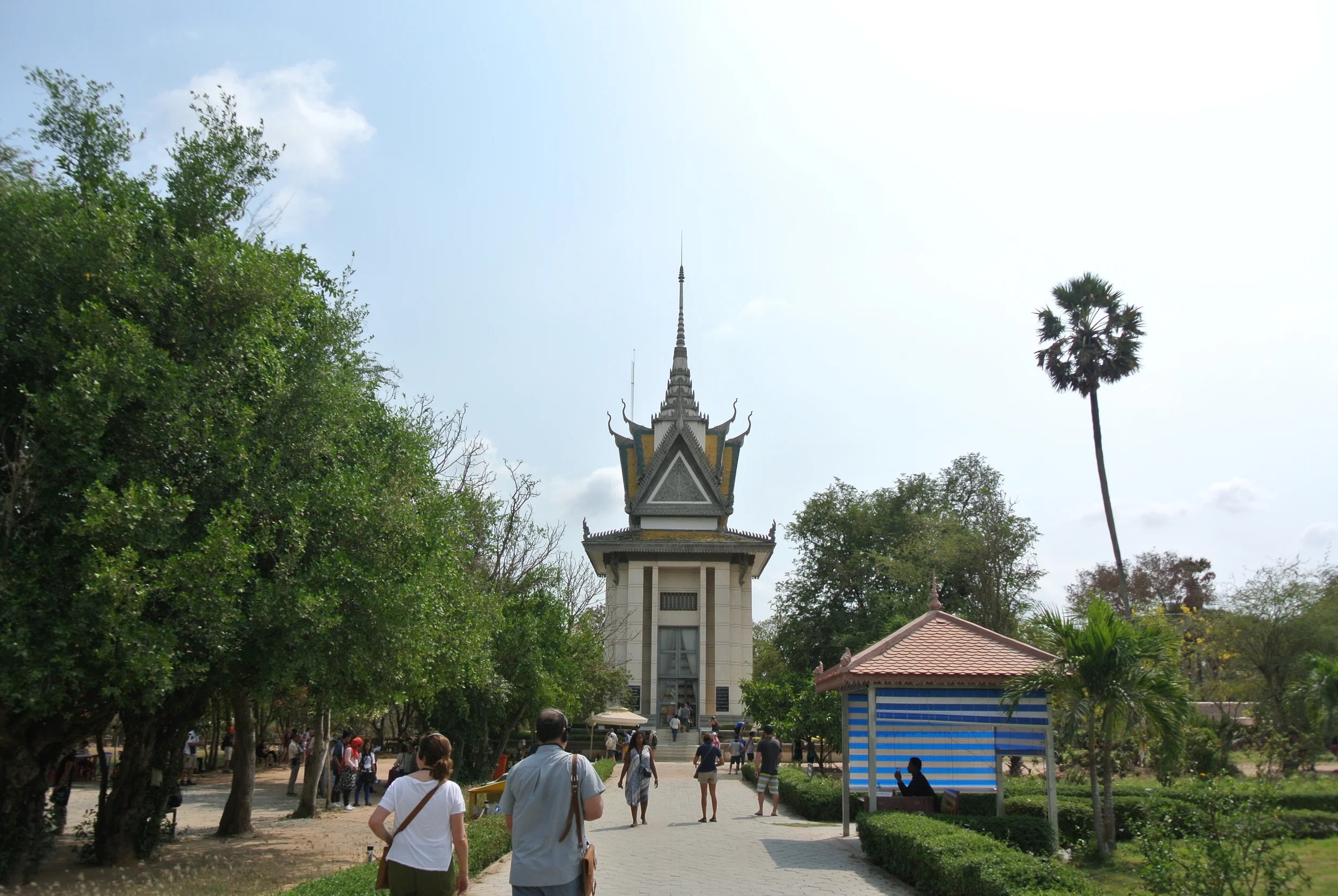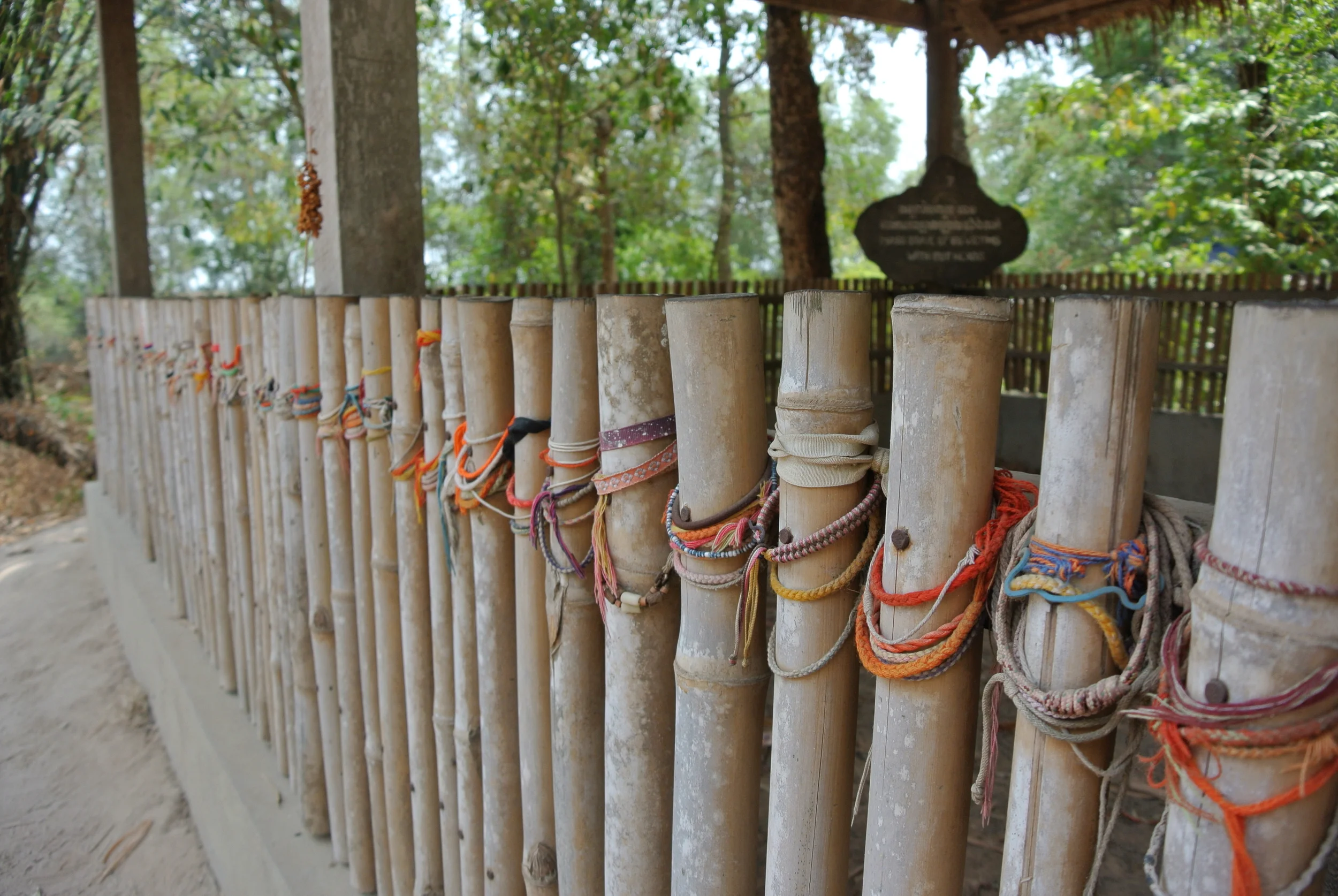The blog is quite dark, so you may wish to skip this one.
A devastatingly recent event in Cambodia's history is a regime from the late 1970s which saw 3 million people die under the ill-informed leadership of Pol Pot and the Khmer Rogue.
A bit of background: Pol Pot came into power as a dictator in 1975, and his reign lasted 3 years. Support for him was based mostly on a false-promised utopia where Cambodia could be free from US bombings spilling over from the Vietnam War which had been so damaging to the country, and their trust in the previous government.
It started with him ordering people out of the cities and into rural areas, often dividing families and communities to keep people submissive. He believed that a self-contained and self-sustaining country was the only way forward for them to survive, so he sent everyone to work every available piece of land for food.
He started only killing those who opposed him, but as the city folk had no idea how to grow food on land they had never seen, and were so separated from their families, he grew paranoid, and began killing anyone he feared would oppose him. This included any intellectuals, and family members who he feared would seek revenge.
The regime lasted only 3 years before he fell from power, but not before he he destroyed much of the culture and country. Many people were killed directly at the merciless hand of the regime, while many others starved or worked to death trying to grow unattainable amounts of rice.
Sadly, Pol Pot outlived many of the people he terrorised, dying at the age of 82 where he never had to pay for his crimes. The UN recognised his government until 1982, even after Vietnam stepped in and set up a new government for the country, and the trials of many key members of the group are still ongoing today.
So, today we went on a huge tour of some of the main sites near Phnom Penh which were part of this monstrosity.
We started at the Killing Fields - a location rightfully named for the thousands of people who were killed here for crimes such as "wearing glasses" or "having soft hands" as they were signs they may have opposed the regime in some way.
Entire families were brutally slaughtered at the hands of boys younger than me. It was horrific hearing stories of mass graves, and trucks bringing in up to 300 people a day to be killed.
There is a giant 14 storied monument to the dead in the centre of the field, filled with skulls. The other bones could not be displayed here as there wasn't room. That is the extent of the casualties at this evil place.
One place in particular was horrifying; a tree where infants were killed. This almost made me sick, especially with the audio guide playing the sounds of revolutionary music that played at the time to cover the moans.
The whole place felt evil, but there were a few indications of growth and love, such as colourful bracelets tied around mass graves, but walking along and trying not to step on bones was a truly horrible eye-opening experience.
After the killing fields, we went to the Genocide Museum, also known as S-21. I was expecting a building with a few exhibits, but instead, it was at an old school which during the regime had been turned into a torture camp.
The small confined cells were eerily new looking, and the whole place looked like it could have been abandoned yesterday, save for the tourists and walls of photos and audio guides.
In one cell, you could still see blood staining the tiles, and the original razor wire was still up, where they kept prisoners from leaping out of windows.
There were only 12 known survivors of the information-seeking camp, and I found it really odd that 2 of them were there, at the site, selling books and paintings they had made of their time at the camp. They explained it as their way of dealing with what happened, but I could barely breathe in some parts of the site, so I don't know how they did it.
The most striking thing about the whole day for me, was how young everyone was. So many of the Khmer Rogue soldiers were just children, who later ended up as prisoners at the infamous S-21, and sent to the Killing Fields.
So many pictures of babies, or children. In fact, one of the survivors was only 11 when he spent 8 weeks at S-21.
It was a horrifying, but I think really important day. There is so much misunderstanding about what happened here during those three years, and the country is still putting itself together.
There were not many places where photos were allowed, or appropriate, but here are a few from the places they allowed them.
Tomorrow, the Royal Palace xx







